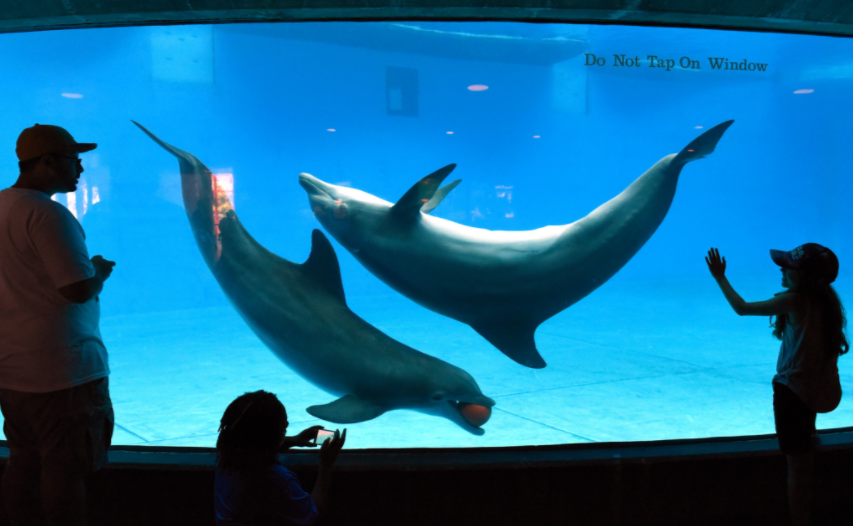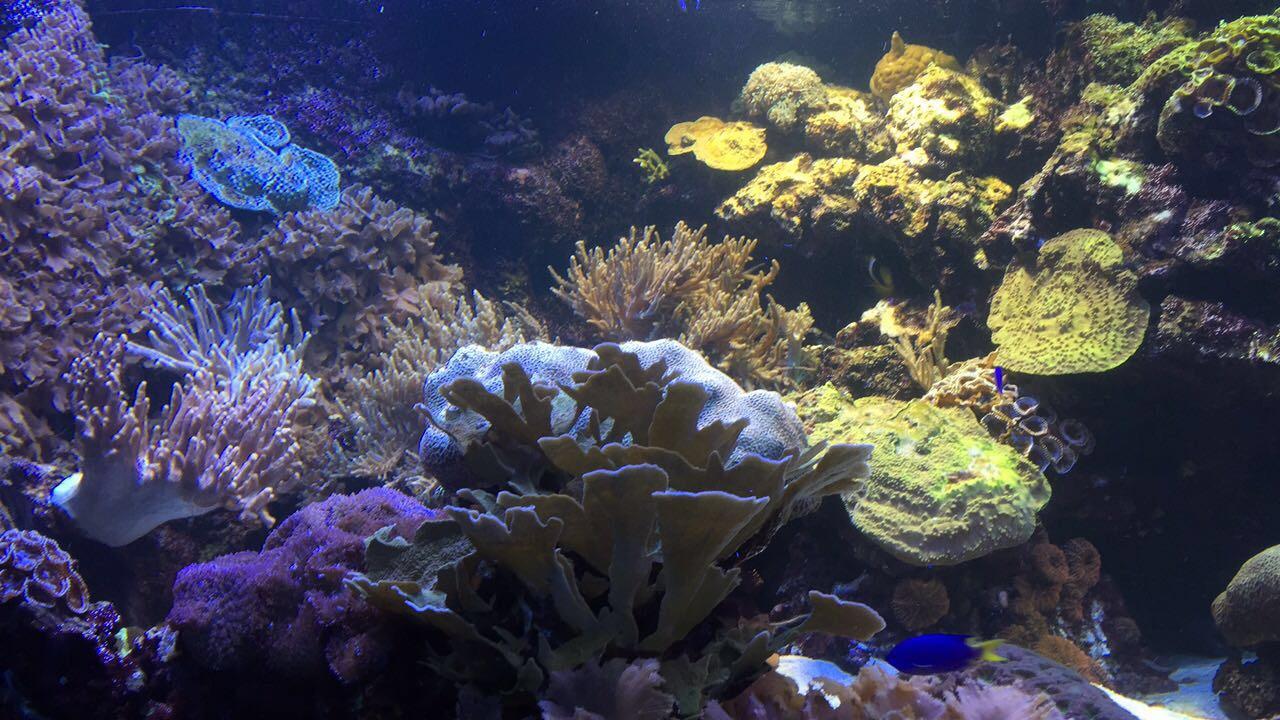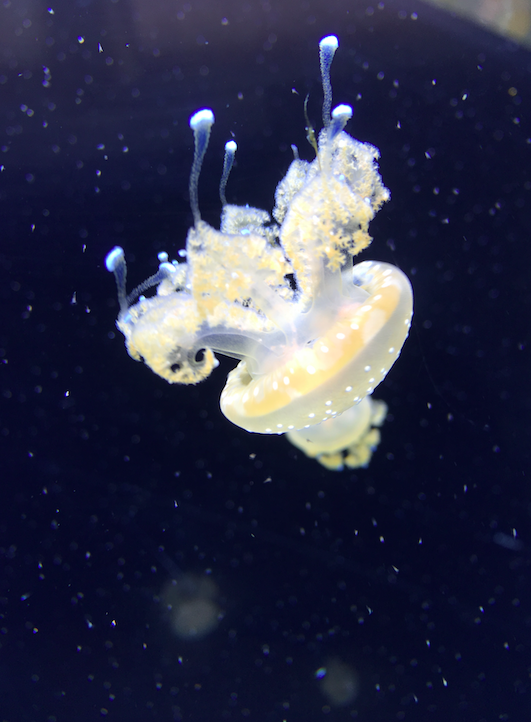The National Baltimore Aquarium: A Taste of the World’s Sea Life
February 1, 2017
The National Baltimore Aquarium is one of the largest aquariums in the country, holding more than 16,000 creatures, and definitely worth the 2 hour drive from Cherry Hill.
When you arrive at the aquarium, you should stand outside, take a step back, and take in the beauty of the building itself. With the walls made of glass and colorful stone shapes juxtaposed with the view of the harbor and the abstract shape of the building, it puts off a modern and sophisticated feel.
Our Animal of the Week is the yellow sea cucumber! They are echinoderms, which means “spiny skin.” See more here>> https://t.co/tEk6ao7EIF pic.twitter.com/48dma68oA2
— National Aquarium (@NatlAquarium) January 30, 2017
Right as you step inside the building, you are in front of a waterfall pouring into a small tank of water filled with many small and plain fish. You feel as if you are in the rainforest because of how they perfectly recreated the environment. After walking past the waterfall and turning in your ticket, you could go anywhere in the aquarium in whatever order you want.
There are many replicated environments like the rainforest in the aquarium, below and above the water. They have a hallway with examples of different habitats and the creatures and plants that live in them. It gives you a glimpse into many different domains for creatures all around the world, with windows looking into a miniature replicated environment, like the coastal beaches and the Atlantic shelf.
There are many windows looking into the pacific coral reef, showing the colorful and tropical fish like the Green Moray Eel and the Spotfin Porcupinefish. The Great Barrier Reef has over 1400 miles of coral, but it is slowly all dying. Already 93% of it is dead due to coral bleaching, and according to CNN travel, “could be extinct by 2050.” At the Baltimore Aquarium, you have a glimpse of the Great Barrier Reef, which you may never be able to see in person while it is alive.
Another habitat you can experience without traveling is the rain forest. In a giant room with multiple stories, showing the different levels of the rain forest. The forest floor, understory, canopy, and emergent layer are all demonstrated, perfectly recreating the home for many creatures. You can see the Blue Poison Dart Frog, Golden Lion Tamarin, and the South American Yellow-Footed Tortoise.
The Australian exhibit includes 1,800 individual animals, most of them only found in Australia. As you walk through the exhibit you can see the Australian Freshwater Crocodile, Barramundi, Black-Headed Python, and the Broad-Shelled Turtle.
Visiting the National Aquarium is definitely a must, and should be on everyone’s bucket list. Including extremely legitimate examples of the Rainforest, Australia’s wildlife, the Coral Reef, and smaller environments. Going here gives you a very strong knowledge about what the environments and wildlife are like in other parts of the world, without having to travel there.

The National Baltimore Aquarium: Are aquariums ethical?
Everyone loves going to the aquarium and walking around with their family, looking at the exotic fish from different parts of the world and watching the trainers do tricks with dolphins, but how do the fish feel? Do they enjoy being ripped from their homes and their families, being placed in a small cage on display for the rest of their lives?
As of now, scientists are not sure whether small fish realize they are in captivity, but they have theories. PETA, the world’s largest animal rights organization, believes that “fish are intelligent, sensitive animals, who think and feel the same way cats and dogs do”. Their article Fish in Tanks, describes how “fish are living beings, not artwork”, and are not around simply for our entertainment. Is it really worth ruining another creatures entire life just for a few hours of entertainment?
In 2012, the scientists at dailyscience.com believed that fish did not feel pain the same way humans did. Most people do not believe fish have emotions and can feel pain, and now scientists are not sure. What they are certain of is that the larger animals, such as dolphins, whales, and sharks, have very strong feelings.
The Baltimore Aquarium has no whales, but they do have exibits including sharks and dolphins. Sharks are used to swimming miles a day, but in the Baltimore Aquarium, they have one ring to swim around repeatedly, so small that it takes less than two minutes to walk around. A shark’s life span decreases 50% when in captivity, and show signs of depression.
The dolphins are kept in a large tank, with bleachers set up to watch them do tricks. Dolphins are highly intelligent, so they are very aware that they were separated from their family and are now only around for entertainment. Out of the 8 dolphins, only 1 was not born in captivity, the other 7 have never seen the ocean or the sun.
The Baltimore Aquarium is planning to make a change. By the end of 2020, they said they will have moved the dolphins to a seaside ocean refuge. According to the aquarium, the dolphins will be cared for in a location that is next to the sea, in much more open waters.
Click here to find out more about their plan for the dolphins.
The Baltimore Aquarium making this change is extremely positive, and will hopefully show other places what to do. Unfortunately, places like SeaWorld, who harbor giant whales keep them in horrible conditions, are not being shut down anytime soon. After they see the Baltimore Aquarium taking these steps, maybe other places will catch on, and stop treating these animals like their lives are worth nothing.

